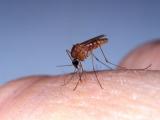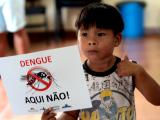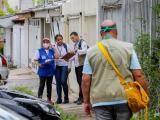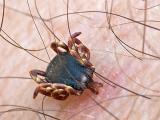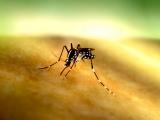Dec 13, 2007 (CIDRAP News) Researchers have found that increases in ocean temperatures triggered by El Nino were followed by increases in the incidence of dengue fever cases in Veracruz, a state on Mexico's east coast that typically has one of the country's highest dengue rates.
The authors of the report, published in the November issue of Tropical Medicine and International Health, said they believe their study is the first to report an association between El Nino Southern Oscillation (ENSO) indicators and dengue incidence in Mexico. ENSO is an ocean temperature phenomenon in the eastern tropical Pacific Ocean that consists of warm (El Nino) and cold (La Nina) phases. The researchers wrote that Veracruz experiences heavy rain, flooding, and heat during El Nino phases of ENSO.
From 1995 to 2003 they recorded weekly temperature readings and rainfall amounts from weather stations in two Veracruz cities: San Andres Tuxtla and Veracruz. As an ENSO indicator, they used weekly reports of sea-surface temperatures in a specific zone of the Pacific Ocean that were available from the US National Oceanic and Atmospheric Administration.
The researchers obtained dengue case reports for the two towns from the Veracruz State Health Ministry. Also, the group examined weekly local activities to control Ades aegypti mosquitoes, which carry the dengue virus.
The investigators found that each 1ºC increase in sea-surface temperature was followed by an increase in the number of dengue casesa significant 46% increase in San Andres Tuxtla 16 weeks later (P=.001) and a 42% increase in Veracruz 20 weeks later (P=.002).
Increases in rainfall and weekly minimum temperatures in the two cities were also found to be significantly related to dengue rates. During the study period, San Andres Tuxtla had greater annual rainfall and a lower mean temperature than Veracruz. July, August, and September were the rainiest months, and May and June were the hottest, the authors reported.
There were 37,005 dengue cases reported in the state of Veracruz from 1995 to 2003; 6.8% were in San Andres Tuxtla and 12.2% in the city of Veracruz. For both towns, the number of dengue cases was highest in 1996-97 and 2002. The report said all four dengue serotypes have been identified in the state.
The group found no association between mosquito-control activities and dengue incidence.
Initially, the authors hypothesized that the number of dengue cases would fall during intense mosquito-control efforts. "On the contrary, we found that these control activities only increased after the rise in dengue cases," they wrote.
Though other studies have found a connection between dengue and ENSO, previous studies used monthly, rather than weekly, data, the authors noted. They said their study design allowed them to make associations within shorter time intervals, which are more compatible with the timing of the mosquito life cycle.
Results of the study might be useful for developing an early warning system for prevention and control of dengue outbreaks in the cities included in the study, the authors wrote.
"Climatic forces may work in parallel with sociocultural and epidemiological conditions," they emphasized.
Diaz-Hurtado M, Riojas-Rodriguez H, Rothenberg SJ, et al. Short communication: impact of climate variability on the incidence of dengue in Mexico. Trop Med Int Health 2007 Nov;12(11):1327-37
See also:
Aug 9 CIDRAP News story "Dengue fever expanding its foothold in Texas"

